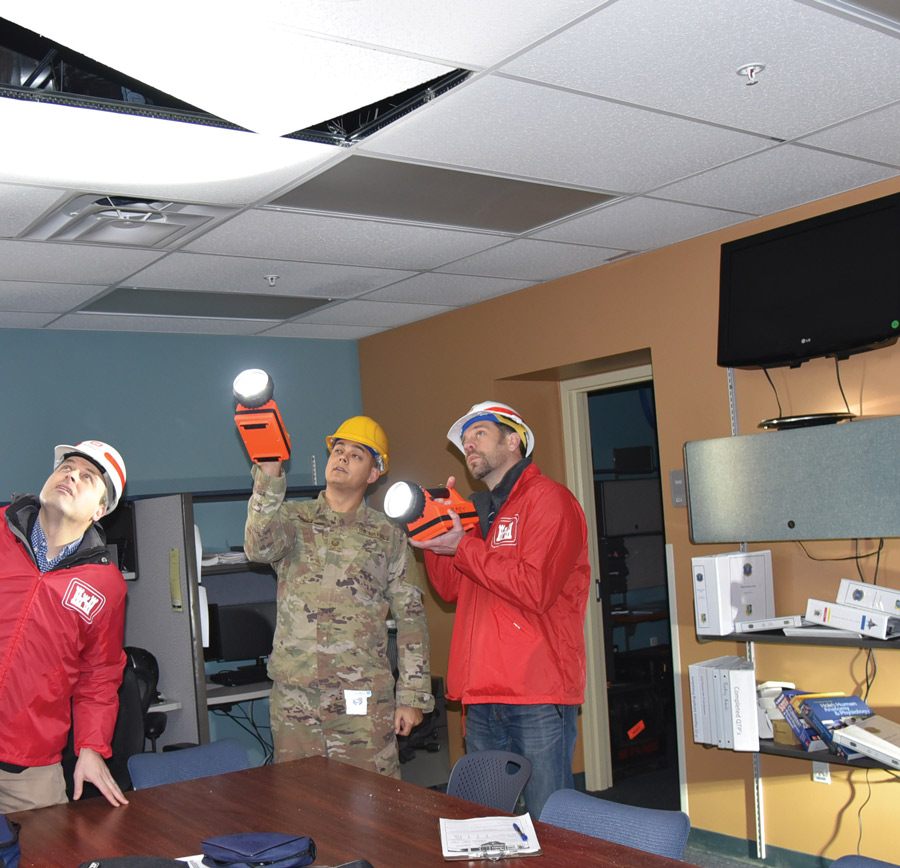
Update
ederal defense projects continue to keep Alaska contractors on the job, but some of the major projects are beginning to wrap up.
Critical infrastructure construction in support of two squadrons of F-35A Lightning II Stealth fighter jets at Eielson Air Force Base is nearing completion. The first squadron arrived in April and the second is expected in December, involving 54 aircraft and approximately 1,500 airmen.
“The district is in the final phases of the F-35 Beddown Program, with three projects left to award: a combat arms and training maintenance facility, demolition of building 1303, and arms and military equipment storage facility,” says John Budnik, public affairs specialist for the U.S. Army Corps of Engineers Alaska District, or USACE.
Initiated in 2016, the program encompasses design and construction of weather shelters, maintenance units, training centers and operations support facilities at a value of approximately $500 million, Budnik says.
One such project close to completion is the F-35 Missile Maintenance Facility at Eielson AFB, awarded to Bristol Design Build Services, LLC. Bristol crews began work on the $18.7 million contract in spring 2019. Initial work involved extensive ground thawing operations, says Project Manager J.T. Wilhelm.
“We had to erect a 200-by-90-by-35-foot-high insulated tent in which to construct the facility during the winter of 2019-2020,” Wilhelm says. “We were able to pour concrete and grout masonry all throughout the winter underneath this tent.”
The program aims to renovate existing infrastructure for the U.S. Army and Air Force at installations around Alaska, he explains. Two of those programs will involve repairs to structures damaged by the 7.1-magnitude earthquake in November 2018 and quality of life improvements to barracks and libraries not related to the earthquake.
Projects slated for fiscal year 2021, which began in October, include earthquake repairs to the Talkeetna Theater at Joint Base Elemendorf-Richardson and a central issue warehouse facility at Fort Richardson.
Patrick Constructors LLC was awarded a contract to revitalize the barracks day rooms at Fort Wainwright. An award is upcoming on the library renovation.
Three larger SRM projects involve fire protection upgrades to two buildings at Fort Wainwright that will include electrical, plumbing, structural and architectural improvements and design and construction repairs to Hangars 7 and 8.
“Last but not least, the Alaska District is committed to constructing these projects using Alaska-based contractors,” Budnik says. “We have been averaging more than 90 percent of award dollars to our Alaska-based partners and we do not anticipate that changing.”

Tom Findtner, USACE-Alaska District

LRDR is a search, track and discrimination radar that, when operational in 2022, will be a component of the United States’ layered Missile Defense System with a primary mission to provide continuous and precise tracking and discrimination of missile threats to the United States, says Ryan Keith, public affairs specialist for the Missile Defense Agency.
Located at Clear Air Force Station near Fairbanks, the site encompasses two separate military construction projects and one radar integration project.
The first phase of construction, which includes the mission control and entry control facilities, began in 2017 and was completed earlier this year, Keith says. Phase two involves support facilities for system sustainment, with completion planned for late 2021.
Military construction and radar integration halted in March when access to the radar station was limited to essential personnel to inhibit the spread of the coronavirus. Work resumed on both projects a few months later.
Agencies and contractors involved continue to focus on construction completion in 2021 and getting the radar operational by following year. Lockheed Martin, the prime contractor on the LRDR effort, awarded many subcontracts to Alaskan companies, employing hundreds of local workers, Keith says. Anchorage-based ASRC Construction, subsidiary of Arctic Slope Regional Corporation has completed several military contracts over the years and currently has three in the LRDR program.
“The increase in military funding for Eielson and Clear provided significant opportunities for numerous contractors,” said Robert Champion, president and chief executive officer of ASRC Construction. “We credit the support of the Alaska congressional delegation for military construction funding throughout the state.”
Estimated cost of the LRDR is approximately $1.5 billion, including development and delivery of the radar and facility construction, says Keith. Once operational, the LRDR program will continue to require local support from between 50 to 100 people.
“This creates job opportunities to operate and maintain the site,” says Keith. “In addition, many of those that will support the LRDR will travel from the Lower 48, creating opportunities for increased travel and tourism revenue as well.”